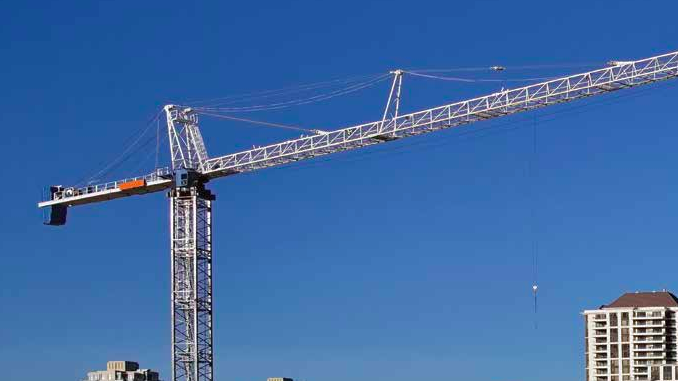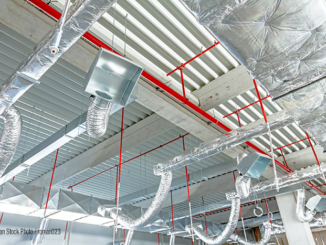Bright Economic Skies Ahead
“The future is very bright,” said Chris McNally, chair of the Canadian Construction Association (CCA). “Canada’s infrastructure and many federal buildings are aging, and either need replacing or a complete overhaul to meet a variety of new needs.”
With Ottawa planning for more than $180 billion in federal infrastructure funding over the next 12 years, “our industry should continue to see historically-high levels of employment and investment in infrastructure,” he said.
Ian Cunningham, president of the Council of Ontario Construction Associations (COCA), is equally bullish. “The level of construction activity in Ontario is very strong and should remain so for 2018,” he said. “Construction activity is strongest in the GTA (Greater Toronto Area).”
In British Columbia, “future growth across our province is strong with the estimated capital cost of proposed construction projects throughout the province hitting $325 billion,” said Fiona Famulak, president of the Vancouver Regional Construction Association (VRCA). “With $75 billion of construction currently underway in BC, we are very pleased that our members have a busy future ahead.”
“The construction industry climate here on PEI is very hot at the moment,” echoed Sam Sanderson, general manager of the Construction Association of Prince Edward Island (CAPEI). “We are seeing a big increase in both commercial and residential construction.”
Paul Heyens, chair of the Alberta Construction Association (ACA), was a bit more restrained in his assessment. “For 2018, Alberta is expected to remain steady compared to 2017,” he said. “The overall climate is one of cautious optimism. However, changes in trade agreements and economic changes in tax structure and labour-related costs dampen the expectations.”
2018’s Most Influential Factors
Even though 2018 looks to be a good construction year, there will be factors at play that could affect the market in Canada. According to Cunningham, these factors include the strength of the U.S. economy and how it creates demand for Canadian goods and services; the state of the contentious NAFTA negotiations now underway, and, “confidence among business and industry leaders such that they will invest in capital expansions,” he said.
The Alberta construction industry’s historical reliance on the energy sector means “continued public sector investment in infrastructure will be important to support the industry,” said Heyens. How this will or will not play out in 2018 remains to be seen.
Meanwhile, “the country needs to figure out how to efficiently and respectfully address environmental concerns while moving forward with important initiatives like the pipelines,” said McNally. Unless this is resolved, many promising projects could be shelved.
Money and Labour
Although Ottawa has committed billions for infrastructure construction, the private sector remains cautious—and the supply of labour uncertain as aging Baby Boomers stop working.
“The need to build or replace infrastructure assets in Canada will continue to drive investment at all levels of government,” said McNally. But capital investment … is dependent upon the confidence of corporate decision makers,” added Cunningham. “There is an abundance of cash sitting on the sidelines waiting to be harnessed.”
“At the same time, an estimated 248,000 workers are expected to retire, creating significant demand for new skilled labour in our industry,” McNally continued. The result: “The labour market is tightening at all levels in the construction industry from the most senior levels in the largest firms to the front line journeypersons that actually do the building,” Cunningham said.
In BC, the construction industry is forecast to be short as many as 15,000 skilled workers by 2026. “The industry attracts only 1 in 69 high school graduates into its construction trades programs,” Familuk said. “That number needs to be approximately 1 in 7 graduates if we are to effectively address the 2026 projected shortfall.”
The Biggest Challenge in 2018
Now that 2018 is upon us, one has to wonder: What will be the Canadian construction industry’s single biggest challenge? On this point, views differed.
“The biggest challenge is planning for uncertainty,” said Heyens. “The economic recovery is somewhat fragile at the moment, even though there are signs of steady growth ahead.”
“The industry’s biggest challenge will be adapting to change,” said Cunningham. The environment will become increasingly competitive as more very large foreign contractors that are often state-supported enter the Ontario market.”
For his part, Sanderson sees a number of major challenges
facing the construction industry is 2018, not least of which is
the shortage of skilled trades.
Familuk agrees: “Unprecedented economic, demographic, and technological pressures are profoundly affecting the construction industry,” she said. “We need to embrace construction innovation because ‘business as usual’ doesn’t cut it any longer.”
The Best Response
The most pressing issue facing contractors is how to respond to economic, labour, and social pressures as they move into 2018 with a solid business plan, but uncertainly on several fronts.
“Cost control,” advised Heyens. “There is cautious optimism and companies who make efforts to develop lean principles and invest in new tech will lead the pack.”
Sanderson said the trick will be to recruit skilled workers.
“Be more open to accepting and using new technology that can improve productivity,” McNally said. “Continuously develop the workforce to use the technology and work smarter.”
“Collaboration is a word that’s almost over-used; however, its importance cannot be over-stressed,” said Familuk. “In business, the search for partners to help address issues, find solutions and deliver competitive advantage is a powerful and essential part of strategy.”
Finally, “the single most important thing a construction company should do is join a construction association in order to stay well informed and up-to-date on changing industry practices, new technologies, and changes to their regulatory and legislative obligations,” Cunningham concluded.




